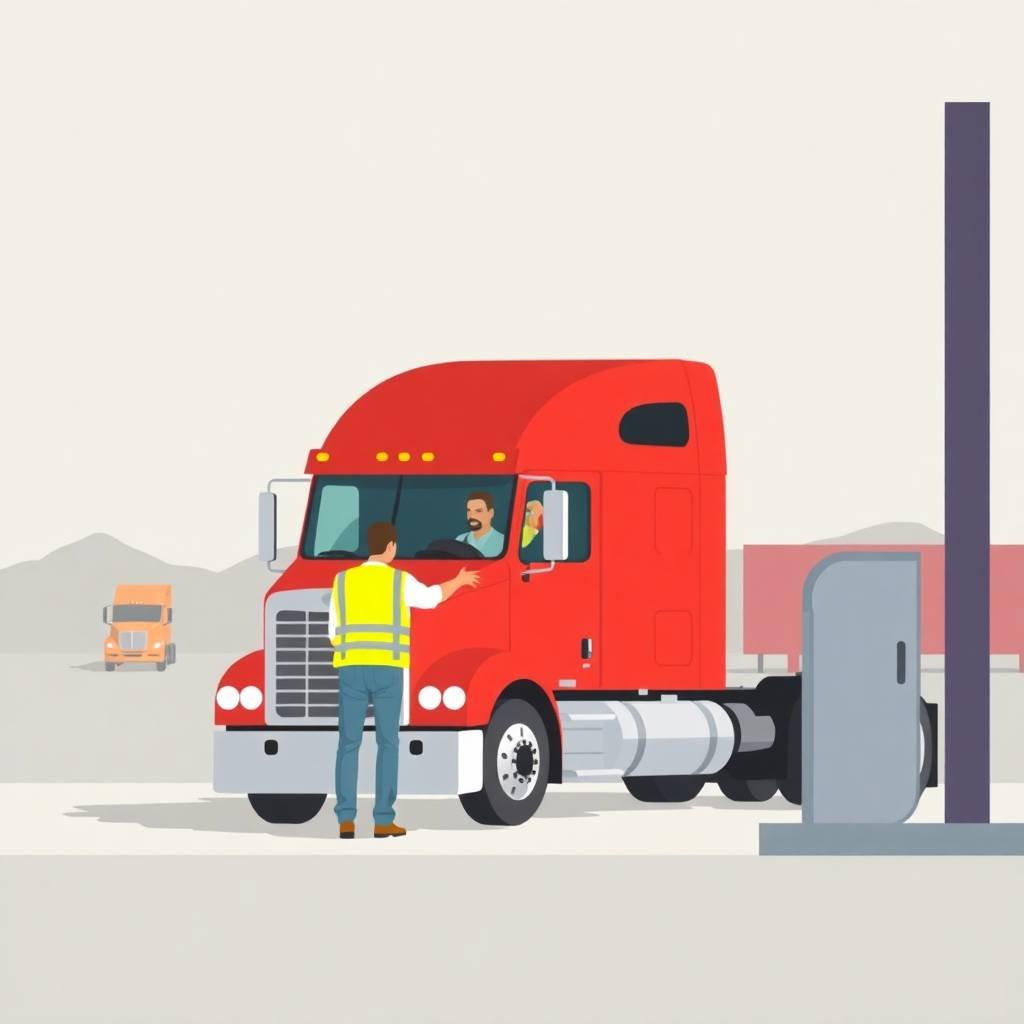1. Overlooking FMCSA Certification: The Most Costly ELD Device Requirement Mistake
One of the most common and expensive mistakes made by carriers and owner-operators is overlooking FMCSA certification when selecting an electronic logging device. With compliance regulations tightening year after year, understanding and meeting ELD Device Requirements is no longer optional—it’s mandatory. Failing to do so can lead to hefty fines, out-of-service orders, and long-term damage to your safety rating.
What Is FMCSA Certification and Why Does It Matter?
The Federal Motor Carrier Safety Administration (FMCSA) mandates that all commercial motor vehicles falling under ELD mandates use devices that meet specific technical standards. These standards ensure accurate logging of hours of service (HOS), tamper resistance, and secure data transfer.
Devices that meet these requirements are listed on the FMCSA’s official registry. Relying on a device not on this list, even if it appears functional, puts your fleet out of compliance. Non-certified devices fail to meet core ELD Device Requirements, which could leave your fleet exposed during a DOT inspection or audit.
Common Compliance Oversights Related to ELD Devices
The most common oversight is assuming that all digital loggers are FMCSA-compliant. Some off-the-shelf ELDs may advertise compliance but haven’t gone through the proper self-certification process. If you’re unsure whether your device is compliant, visit the Department of Transportation’s website or schedule a free compliance consultation.
Other overlooked areas include:
- Poor driver training on compliant use
- Lack of proper DQ file setup (read more about DQ File Violations)
- Missing or inaccurate supporting documents
These mistakes can have ripple effects across your entire compliance strategy, from DOT audit preparation to your SMS score.
The Cost of Non-Compliance with ELD Device Requirements
Penalties for using a non-compliant device are severe. Beyond fines, your fleet can face out-of-service orders, audits, and lower safety scores. The long-term implications include increased insurance rates and DOT scrutiny. Understanding your full range of FMCSA compliance requirements is essential.
Whether you’re a new entrant or a seasoned carrier, our tools—from new entrant audit survival tips to CSA intervention support—help you avoid critical mistakes.
Avoiding Mistakes with the Right Resources and Services
Compliance goes far beyond ELDs. It’s about having an integrated system that addresses everything from drug and alcohol testing management to DQ file maintenance, pre-employment drug testing, and random drug test programs.
For owner-operators, our DOT compliance checklist and compliance services simplify your entire operation. We also provide assistance for UCR filings, IFTA/IRP support, and driver safety score management.
Be sure to review our guidance on how to correct FMCSA violations before issues spiral into costly consequences.
Stay Informed and Compliant
Explore our latest insights and tools by visiting the Truckers Compliance Hub blog. Key reads include:
You can also find more resources on FMCSA compliance help for companies and services for owner-operators.
Final Thoughts on FMCSA-Certified ELDs
Meeting ELD Device Requirements starts with verifying FMCSA certification and continues with proactive training, accurate documentation, and expert support. Don’t leave your compliance to chance—partner with experts who can keep your fleet audit-ready and legally sound.
For legal and policy details, please review our Disclaimer and Terms of Service.

2. Improper Installation: Why Plug-and-Play Isn’t Always Plug-and-Compliant
When it comes to compliance, simply plugging in your electronic logging device (ELD) isn’t enough. Many fleets assume that a plug-and-play setup guarantees full compliance—but that misconception can lead to costly violations. To meet full ELD Device Requirements, proper installation and configuration are essential. Missteps in setup can result in data gaps, incorrect logs, and eventual non-compliance with FMCSA regulations.
The Misleading Simplicity of Plug-and-Play Devices
While plug-and-play ELDs promise ease of use, they often require more technical setup than advertised. For example, devices that aren’t securely connected to the engine control module (ECM) may fail to record drive time accurately—one of the core ELD Device Requirements mandated by the FMCSA. Improper setup can result in missing or corrupt records, which become red flags during DOT audits.
Even small errors, such as improper vehicle configuration, time zone settings, or Bluetooth sync issues, can result in violations. To avoid these pitfalls, review our DOT compliance checklist or speak directly with a compliance expert by scheduling an appointment.
ELD Device Requirements Demand More Than Hardware
Meeting ELD Device Requirements involves more than simply having a device—it’s about proper use, data integrity, and regulatory alignment. In addition to installation, ongoing responsibilities include:
- Ensuring drivers are trained (see driver qualification file requirements)
- Maintaining clean logs that align with HOS rules
- Keeping systems updated to comply with evolving FMCSA compliance requirements
Fleet managers must also monitor supporting compliance categories like drug and alcohol testing and DQ file violations to prevent cascading compliance failures.
The Hidden Compliance Costs of Improper Installation
Failing to meet ELD Device Requirements due to poor installation can lead to serious consequences: roadside inspection failures, audit flags, and even intervention thresholds being triggered within the FMCSA Safety Measurement System (SMS). These issues not only impact your safety rating but can also trigger a CSA intervention, further increasing your compliance burden.
Additionally, gaps in ELD logs may conflict with driver drug and alcohol testing program requirements. For example, if post-accident testing is triggered, incomplete logs can complicate compliance verification.
Tools and Services to Ensure Full ELD Compliance
Whether you’re a fleet manager or owner-operator, you can avoid these costly issues by leveraging our expert services, including:
- Driver safety score management
- Drug and alcohol testing management
- How to correct FMCSA violations
- IFTA, IRP, and BOC-3 support
- New entrant audit preparation
- UCR filing assistance
To ensure ongoing success, review our resources for FMCSA compliance services for owner-operators and trucking companies. You can also view our latest posts for updates and insights on topics such as FMCSA Clearinghouse compliance and pre-employment drug testing requirements.
Compliance Is Ongoing—Not Just a Setup Step
The bottom line: achieving full ELD Device Requirements compliance requires more than a plug-and-play solution. It demands precision during installation, regular system checks, and a comprehensive approach to overall DOT compliance.
To stay ahead, ensure you’re supported by professionals. Whether you’re new to the industry or managing a fleet, explore our compliance checklist for owner-operators or contact us for customized guidance.
Before proceeding, please review our Disclaimer and Terms of Service to understand how our services apply to your unique operational needs.

3. Ignoring Driver Training: ELD Device Requirements Are Useless If Drivers Don’t Understand Them
While fleet managers may invest heavily in hardware and systems, ignoring proper driver training can undermine the entire compliance strategy. ELD Device Requirements are not just about having compliant devices—they’re about using them correctly. If drivers don’t understand how to operate electronic logging devices (ELDs), it can lead to inaccurate logs, audit failures, and costly fines.
Why Driver Understanding Is Critical for Compliance
The Federal Motor Carrier Safety Administration (FMCSA) mandates strict ELD Device Requirements to ensure accurate tracking of Hours of Service (HOS). But even the most advanced ELDs are ineffective if drivers don’t know how to log duty status changes, manage unassigned driving time, or perform data transfers during roadside inspections.
Failure to comply can trigger enforcement actions, especially during DOT audits. That’s why training drivers isn’t optional—it’s essential. For example, if a driver fails to acknowledge a malfunction or misses a required edit approval, it can jeopardize your fleet’s compliance standing.
Training Covers More Than the Basics
Basic ELD operation is just the start. Proper training ensures that drivers understand how ELD data integrates with other compliance areas, including:
- Driver qualification file requirements
- Drug and alcohol testing programs
- FMCSA Clearinghouse compliance
- Random DOT drug testing
- DQ file violations
Well-trained drivers can navigate these responsibilities with greater confidence, reducing the risk of compliance mistakes and penalties. Comprehensive support is available through our DOT audit preparation services and drug and alcohol testing management.
How Improper Use Impacts ELD Device Requirements
Improper ELD use leads to data inconsistencies, such as missed driving segments or erroneous duty statuses. This not only fails to meet ELD Device Requirements but can also negatively affect your Safety Measurement System (SMS) score, triggering CSA intervention thresholds.
Moreover, inaccurate logging may violate other FMCSA rules, such as pre-employment DOT drug testing requirements and compliance for trucking companies. To address such issues, fleet operators should use our how to correct FMCSA violations guide or schedule an appointment for professional assistance.
Equip Your Fleet with the Right Tools and Knowledge
Effective compliance goes beyond devices—it’s about creating a system that works across departments and drivers. Our resources help owner-operators and fleet managers build this system:
- DOT compliance checklist for owner-operators
- Driver safety score management
- UCR filing assistance
- IFTA, IRP, and BOC-3 support
- New entrant safety audit survival tips
To explore more detailed guidance, visit our hub for FMCSA compliance help for trucking companies or owner-operator compliance services.
Get Ahead with Expert Support
Whether you’re looking to implement new training protocols or fine-tune your compliance processes, we’re here to help. View our latest posts or schedule a consultation to build a smarter, more compliant fleet.
Before using our resources, be sure to review our Disclaimer and Terms of Service for more information on how our services apply to your business.
Bottom line: ELDs are only as effective as the people using them. Make training a priority and ensure your team fully understands all ELD Device Requirements to avoid preventable violations.

4. Skipping Regular Audits: Internal Checks That Catch ELD Compliance Problems Before the DOT Does
Staying compliant with ELD Device Requirements is more than just having a device installed in each vehicle—it’s about ensuring those devices are used correctly and consistently. Too often, carriers skip regular internal audits, assuming that everything is fine until the Department of Transportation (DOT) steps in. By then, it’s too late. Implementing internal checks is the key to catching ELD compliance problems before they result in costly violations.
The Importance of Internal Audits for ELD Compliance
Regular internal audits serve as a proactive safeguard against non-compliance. These audits ensure your team is consistently following ELD Device Requirements, which include proper data transfer methods, log edits and annotations, unassigned driving time, and device malfunction reporting. Skipping these checks leaves room for errors that could violate the standards set by the FMCSA.
An internal audit can help identify gaps in your operation—such as DQ file violations, incorrect log entries, or misunderstandings about drug and alcohol testing compliance. Use our DOT compliance checklist to get started.
Why Internal Checks Should Be Routine
DOT audits don’t come with much warning. If you’re not conducting your own audits regularly, you’re increasing your risk of being unprepared. With proper internal reviews, you can:
- Ensure your drivers are following ELD Device Requirements
- Verify proper management of driver qualification files
- Check for compliance with random DOT drug testing
- Evaluate your company’s standing in the FMCSA Safety Measurement System (SMS)
Our driver safety score management services help you monitor key performance indicators so you can take action before a problem becomes a violation.
How to Set Up a Reliable Internal Audit Process
Start by reviewing common FMCSA compliance mistakes to see where other fleets go wrong. Use these insights to build internal policies that support full compliance with ELD Device Requirements. It’s also crucial to include compliance with pre-employment DOT drug testing requirements and ongoing driver drug and alcohol testing programs.
For owner-operators and small fleet owners, our DOT compliance checklist for owner-operators can serve as a comprehensive tool to stay organized. If you’re unsure where to begin, schedule a one-on-one consultation for expert guidance.
Leverage the Right Resources and Support
Proper auditing isn’t just a defensive strategy—it’s a way to optimize your operations. Consider using these services to reinforce your audit process:
- DOT audit preparation
- Drug and alcohol testing management
- CSA intervention threshold tracking
- How to correct FMCSA violations
- UCR filing deadlines
- IFTA, IRP, and BOC-3 support
- New entrant safety audit tips
For more help, check out our FMCSA compliance services for trucking companies or specialized compliance solutions for owner-operators.
Stay Ahead of the DOT
The DOT doesn’t wait for you to be ready, but internal audits give you the upper hand. By aligning your practices with ELD Device Requirements and catching issues early, you reduce risk and improve overall safety.
To explore more best practices, visit our resource center and review our Disclaimer and Terms of Service. Prevention is always more cost-effective than correction—take the first step toward better compliance today.

5. Data Transfer Failures: The Hidden Threat in ELD Device Requirements Compliance
In the world of commercial trucking, ELD Device Requirements are the cornerstone of maintaining compliance with the Federal Motor Carrier Safety Administration (FMCSA). While most carriers focus on installation and usage, one of the most commonly overlooked—and potentially damaging—failures lies in the data transfer process. When drivers or fleet managers fail to ensure seamless transmission of electronic logs to enforcement officials, they inadvertently expose their operations to compliance violations, fines, and costly delays.
Understanding the Role of Data Transfer in ELD Compliance
ELD Device Requirements are more than hardware specifications. According to the U.S. Department of Transportation, devices must support secure and consistent data transfer methods. Whether it’s through telematics or local transfer (USB/Bluetooth), any interruption or malfunction during this process can result in a failed roadside inspection or audit.
To help prevent such mishaps, carriers should implement regular checks as part of a comprehensive DOT compliance checklist. Data transfer issues are not isolated; they often coincide with DQ file violations, driver training lapses, or FMCSA compliance mistakes that could have been caught with proper internal audits.
Hidden Compliance Risks Behind ELD Data Transfer Failures
The FMCSA mandates that logs must be transmitted on request, especially during roadside inspections and audits. If a device fails to transfer data on demand, your fleet could face penalties. These issues are particularly dangerous because they often go unnoticed until the moment of enforcement.
Fleet owners can avoid these pitfalls by scheduling regular system checks and using tools like our driver safety score management platform to track log anomalies. Additionally, reinforcing proper log handling through driver education ensures compliance with ELD Device Requirements.
Proactive Strategies for Avoiding Data Transfer Breakdowns
To minimize risk, operators should adopt a multi-faceted compliance approach. Start with our FMCSA compliance help for trucking companies and explore services tailored for owner-operators.
We also recommend conducting routine DOT audit preparation sessions. During these audits, assess the performance of ELDs, review driver qualification file requirements, and verify correct documentation for pre-employment drug testing and random drug testing.
If issues are found, our guide on how to correct FMCSA violations can assist in developing a resolution plan. Our drug and alcohol testing management services further reinforce adherence to compliance.
Stay Prepared with the Right Support
Many carriers underestimate the cascading effects of data transfer failures on their compliance standing. Poor data flow affects everything—from your SMS score to CSA intervention thresholds—and can trigger unnecessary scrutiny from the FMCSA.
Whether you’re new to compliance or preparing for a new entrant safety audit, staying proactive is key. View our latest posts on Truckers Compliance Hub and schedule a consultation to get personalized advice on your compliance strategy.
Compliance Is Not Optional—Be Ready
When it comes to ELD Device Requirements, ensuring proper data transfer is just as critical as installation and use. Protect your fleet with professional support, accurate monitoring, and a solid compliance foundation.
Explore more insights on topics like FMCSA Clearinghouse compliance, drug and alcohol testing compliance, or FMCSA compliance requirements for trucking companies. Don’t forget to review our Disclaimer and Terms of Service to understand how we support your regulatory obligations.

What are the most commonly overlooked ELD Device Requirements that lead to compliance issues?

One of the most overlooked ELD Device Requirements is ensuring that the device is FMCSA-certified. Others include failure to properly train drivers, not maintaining backups for data transfer, and incorrect installation. These issues often come to light during DOT audits, which is why having a structured DOT audit preparation plan is critical to avoiding costly compliance mistakes.
How can improper driver training affect ELD Device Requirements compliance?

If drivers are not trained properly, they may log hours incorrectly, fail to annotate changes, or even use the wrong duty status—all of which violate ELD Device Requirements. These violations can impact your fleet’s safety rating and increase the risk of fines. Implementing a robust training program in parallel with DQ file setup and monitoring ensures your team is fully prepared and compliant.
Can ELD Device Requirements affect drug and alcohol testing procedures?

Yes, although indirectly. ELD Device Requirements ensure that duty status and driving time are accurately recorded, which is essential for identifying when drug and alcohol testing should be conducted—especially in post-accident scenarios. Non-compliant logs can interfere with compliance timelines. Having a reliable drug and alcohol testing management system supports adherence to both ELD and testing regulations.
Do ELD Device Requirements impact my responsibilities under UCR and IFTA?

While ELD Device Requirements are focused on hours-of-service compliance, they can support recordkeeping related to mileage tracking and vehicle operation times—key data points needed for IFTA and IRP reporting. Ensuring your ELD system accurately captures this data simplifies IFTA, IRP, and UCR filing, reducing your risk of filing errors and penalties.
How do I prepare my fleet for a roadside inspection under ELD Device Requirements?

Preparation involves confirming that all ELD Device Requirements are met, including the ability to transfer data via Bluetooth, USB, or web services. Drivers must also know how to provide inspection reports on demand. A helpful way to stay inspection-ready is to utilize DOT audit preparation services that include regular system checks and log reviews to identify issues before they become violations.
Igor Iturriaga is a transportation compliance expert and founder of Dynamic 305 Miami LLC. He helps owner-operators and fleets stay FMCSA-compliant and audit-ready. https://www.linkedin.com/in/igor-iturriaga-64503217/
